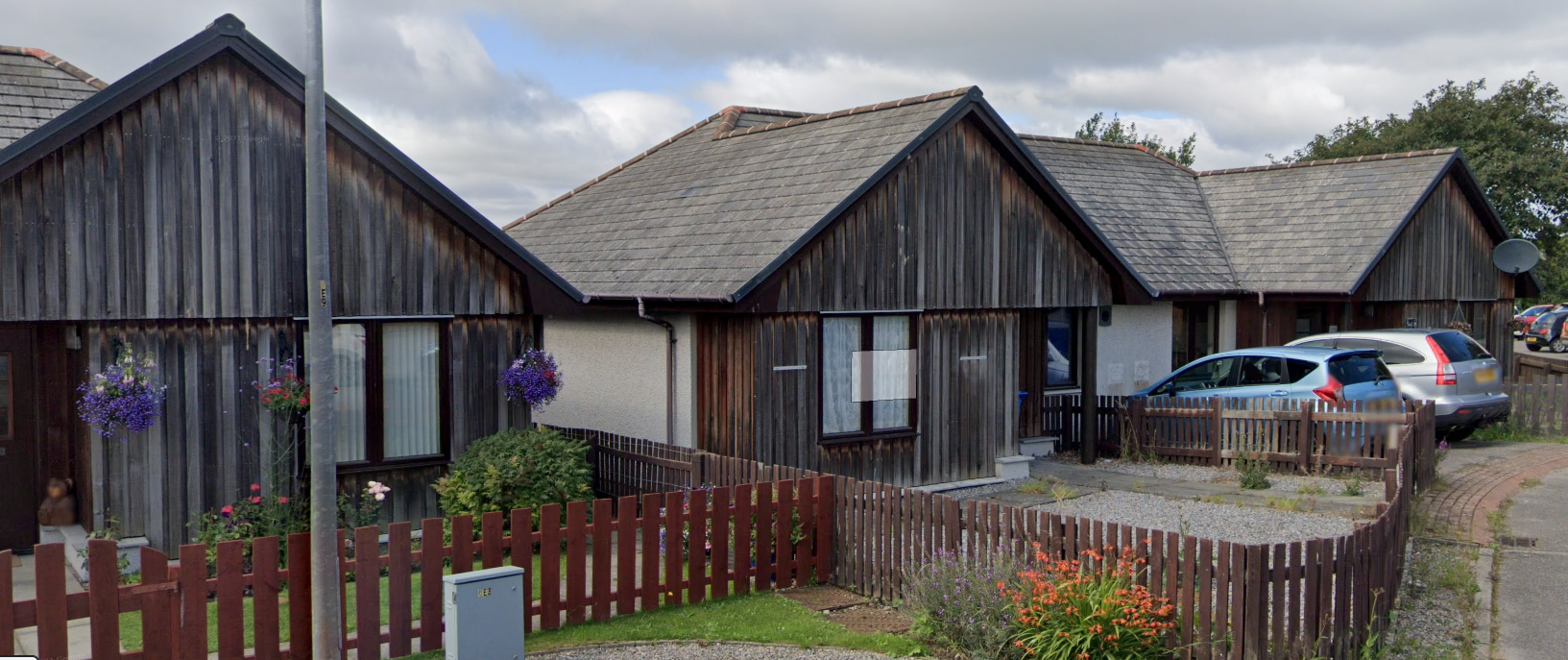We’d like to remind Forumites to please avoid political debate on the Forum.
This is to keep it a safe and useful space for MoneySaving discussions. Threads that are – or become – political in nature may be removed in line with the Forum’s rules. Thank you for your understanding.
The MSE Forum Team would like to wish you all a Merry Christmas. However, we know this time of year can be difficult for some. If you're struggling during the festive period, here's a list of organisations that might be able to help
📨 Have you signed up to the Forum's new Email Digest yet? Get a selection of trending threads sent straight to your inbox daily, weekly or monthly!
Has MSE helped you to save or reclaim money this year? Share your 2025 MoneySaving success stories!
Timber cladding issues
Comments
-
I read somewhere though that if the larch touches the ground, it reduces the lifespan of it to about 10 years?Apodemus said:I wonder if this is not simply splash-back from the rain hitting the patio? The lower portion of the cladding is always going to be exposed to more water for longer as it runs down the walls, particularly during a damp, mild spell of weather.
Also, while the timber looks "mouldy" at the moment, larch cladding will always look a bit off-colour during the initial stages of its weathering and again that weathering will be different at the lower edges of the wall than the top. Eventually it will all even out to give a nice aged-timber effect, but it can be hard for some people to accept the intermediate stage.0 -
Sure, the bottom edge might decay if it is touching the ground or otherwise not shedding water and cutting it shorter would be good. But I suspect that is a different question from your "mouldy" facings. It is unlikely that new larch cladding is wicking water up from the ground to the level that you are seeing as "mouldy".rajanm said:
I read somewhere though that if the larch touches the ground, it reduces the lifespan of it to about 10 years?Apodemus said:I wonder if this is not simply splash-back from the rain hitting the patio? The lower portion of the cladding is always going to be exposed to more water for longer as it runs down the walls, particularly during a damp, mild spell of weather.
Also, while the timber looks "mouldy" at the moment, larch cladding will always look a bit off-colour during the initial stages of its weathering and again that weathering will be different at the lower edges of the wall than the top. Eventually it will all even out to give a nice aged-timber effect, but it can be hard for some people to accept the intermediate stage.0 -
Here's a random streetview shot of some Larch clad houses, showing the variation in colour with age. You can see how the portion sheltered by the eaves has weathered less then the bits lower down and then some boards that have moved through the black stage onto the silver aged-look. I think these houses were about 17 years old when the picture was taken. While they are starting to look good now, they did go through a stage where they looked as if they were crying out for some good-old fashioned creosote!

1 -
The cladding needs to go below the patio to cover the membrane. There looks to be a slight gap between it and the patio to allow moisture through.
Years ago, a brick foundation would be built to DPC to take the timber frame, so this problem wouldn't have occurred.
Nowadays, ground screws are a cheaper option, so the cladding goes closer to the ground.0 -
Would it just be one end that would decay? Wouldn't rot set in further up the board too?Apodemus said:
Sure, the bottom edge might decay if it is touching the ground or otherwise not shedding water and cutting it shorter would be good. But I suspect that is a different question from your "mouldy" facings. It is unlikely that new larch cladding is wicking water up from the ground to the level that you are seeing as "mouldy".rajanm said:
I read somewhere though that if the larch touches the ground, it reduces the lifespan of it to about 10 years?Apodemus said:I wonder if this is not simply splash-back from the rain hitting the patio? The lower portion of the cladding is always going to be exposed to more water for longer as it runs down the walls, particularly during a damp, mild spell of weather.
Also, while the timber looks "mouldy" at the moment, larch cladding will always look a bit off-colour during the initial stages of its weathering and again that weathering will be different at the lower edges of the wall than the top. Eventually it will all even out to give a nice aged-timber effect, but it can be hard for some people to accept the intermediate stage.0 -
Wet rot only affects the timber that is constantly damp.0
-
HiThisIsWeird said:Hmm.
Who put the patio in? It should not have been taken that close to the building, unless at a much lower height. I wouldn't start complaining to the GR builder until you sort that patio - most likely by cutting away a nice strip from around the wall. Currently, the patio is more at fault than the building.
Could we have a photo of the sides of the building, so we can see how close the ACTUAL building has been taken to the ACTUAL ground?
I know it's been a while since I posted this but our garden room company have said they'll add cross ventilation to the sides of the room but they won't cut the cladding back as it'll invalidate the warranty.
You mentioned cutting back the patio. Do you think it's just the tiles that need to be cut back or the whole step so theres and actual 100mm to 150mm gap between the patio and the room?0 -
There should be (ideally) 150mm between the ground and the building. It's to prevent a large amount of rain splashing up the building. The patio should be set back from the building slightly as well.rajanm said:
HiThisIsWeird said:Hmm.
Who put the patio in? It should not have been taken that close to the building, unless at a much lower height. I wouldn't start complaining to the GR builder until you sort that patio - most likely by cutting away a nice strip from around the wall. Currently, the patio is more at fault than the building.
Could we have a photo of the sides of the building, so we can see how close the ACTUAL building has been taken to the ACTUAL ground?
I know it's been a while since I posted this but our garden room company have said they'll add cross ventilation to the sides of the room but they won't cut the cladding back as it'll invalidate the warranty.
You mentioned cutting back the patio. Do you think it's just the tiles that need to be cut back or the whole step so theres and actual 100mm to 150mm gap between the patio and the room?I think your mould is caused either by not having enough of a protective coating on the timber or, if you have a look at 'Oakwood Garden Rooms Self Build Group' on Facebook and run a search on 'mould' within it, you'll see several posts on the same lines along with how people are treating it. Lack of sunlight seems to be a common theme.Everything that is supposed to be in heaven is already here on earth.
0 -
Personally I would cut the cladding off an inch or so below the level of the patio ( assuming it has a waterproof membrane behind it ).
Having a 6" gap between the patio and the building would look a bit weird, and probably get full of leaves and debris. If cutting off the cladding doesn's solve it totally ( I can't see a massive amount of rainwater splashing back and causing mould ) you can look at adding something to the lower 6" or so of the cladding to give it more waterproofing ( a sort of splashback for the building )
Could add an extra plank of wood along the bottom, or even a black upvc trim over the bottom 6" which may not look too bad0 -
The garden room company won't cut the cladding back as they say it needs to run to the ground for warranty purposes. They have, however said they'll add sub floor ventilation on either side which may help. Both sides are clad in black uPVC and I wonder if allowing air to circulate will help dry the bottom of the cladding out ?mi-key said:Personally I would cut the cladding off an inch or so below the level of the patio ( assuming it has a waterproof membrane behind it ).
Having a 6" gap between the patio and the building would look a bit weird, and probably get full of leaves and debris. If cutting off the cladding doesn's solve it totally ( I can't see a massive amount of rainwater splashing back and causing mould ) you can look at adding something to the lower 6" or so of the cladding to give it more waterproofing ( a sort of splashback for the building )
Could add an extra plank of wood along the bottom, or even a black upvc trim over the bottom 6" which may not look too bad0
Confirm your email address to Create Threads and Reply

Categories
- All Categories
- 352.9K Banking & Borrowing
- 253.9K Reduce Debt & Boost Income
- 454.7K Spending & Discounts
- 246K Work, Benefits & Business
- 602.1K Mortgages, Homes & Bills
- 177.8K Life & Family
- 259.9K Travel & Transport
- 1.5M Hobbies & Leisure
- 16K Discuss & Feedback
- 37.7K Read-Only Boards




